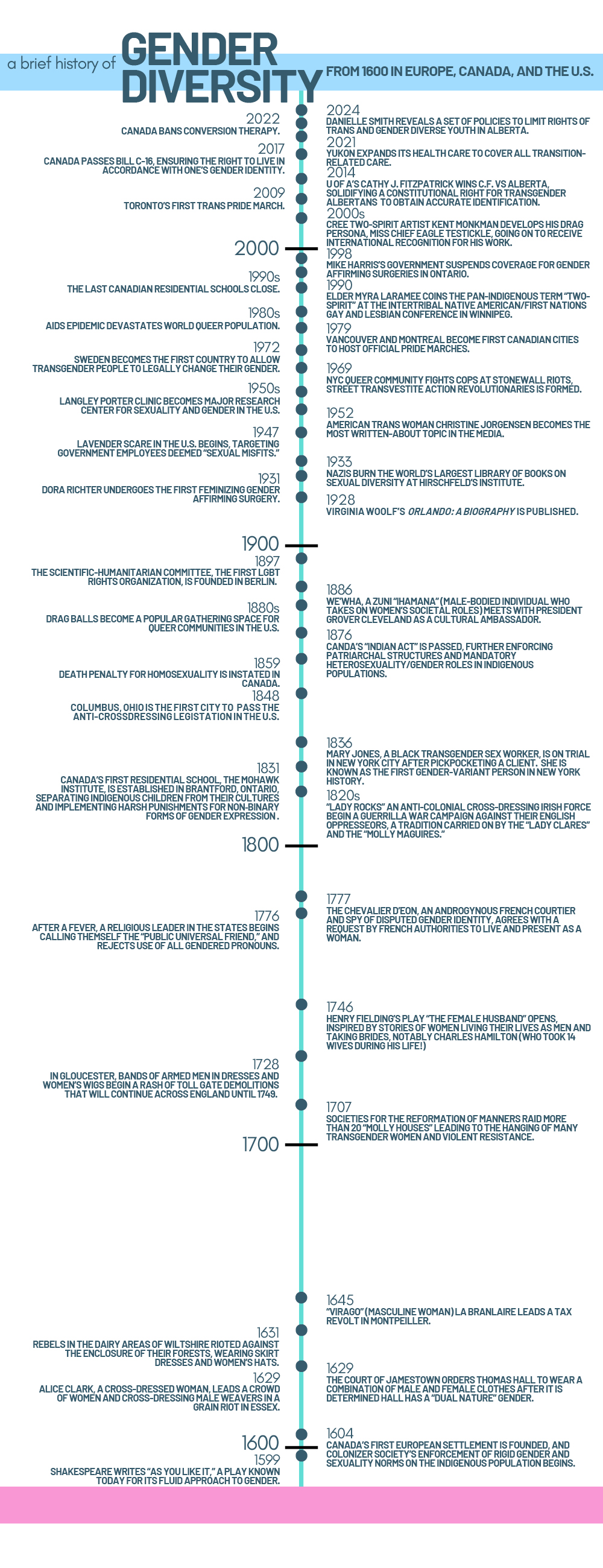A Brief History of Gender Diversity
From 1600 in Europe, Canada and the U.S.
by Emilia Hillyer
What makes a “transgender history,” when the term “transgender” is dependent on a current understanding of gender? What is the proper approach to take when an individual in the past meets the criteria to be transgender from our contemporary perspective but didn’t think of themselves in the same way? And what about those today who meet the criteria to be considered transgender but opt out due to baggage associated with the term: the belief that it necessitates a shift within the gender binary and the idea it is a Eurocentric, privileged approach to gender? How and when are they included or excluded in our histories? An inclusive approach might serve us best here. From the “galli” transgender priestess of Rome and Anatolia to the 115 North American Indigenous nations with documented gender traditions outside of the binary to the modern-day cross-dressing Vietnamese “Đồng cô” spiritual leaders of the Mother Goddess religion, gender diversity is a constant throughout every arrangement of humanity in the world.
Published October 2024
